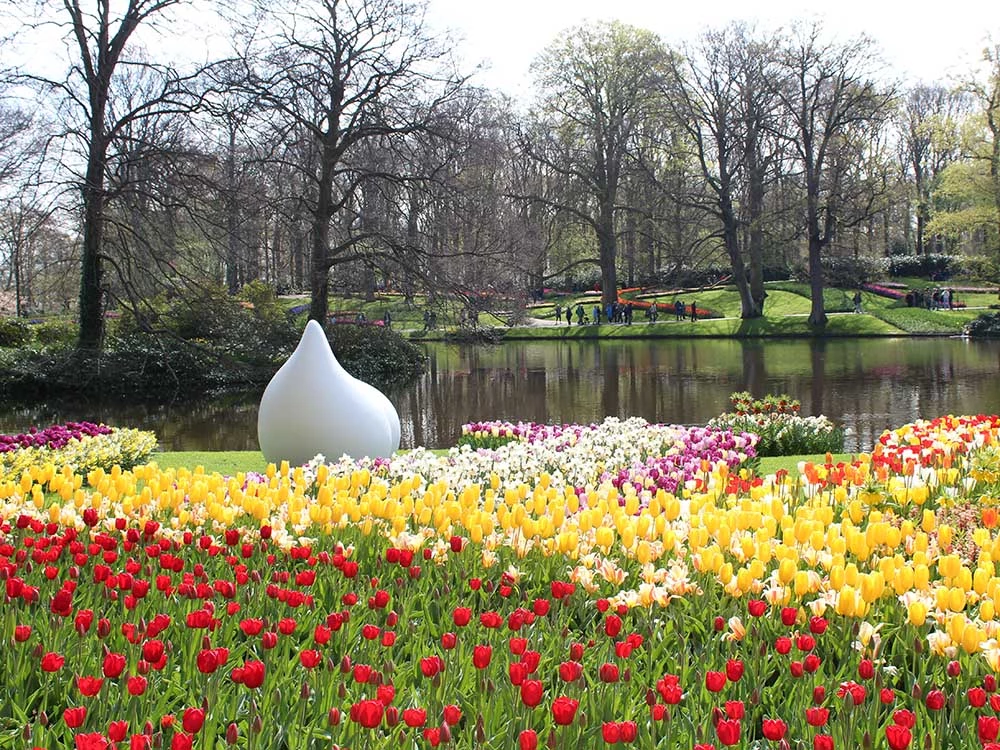Fun facts about Keukenhof and tulip season


There’s definitely something about a sea of flowers that makes people wish Keukenhof wasn’t a seasonal affair. Home to the world’s most beautiful flowerbeds and bulb exhibitions, a trip to this unique feast of floral blossoms will amaze your senses. Keukenhof is the highlight of tulip season!
If you’re a lover of spring in the Netherlands, then there’s no better place to observe it in its full bloom than Keukenhof. Keukenhof is one of the most beautiful attractions in the Netherlands and is known to be a beehive of activities as visitors never seem to get tired of seeing the garden. The tulip garden is only open from mid-March to mid-May, and you should check available Keukenhof tickets in advance.
Tulip season in Amsterdam, and the rest of the Netherlands, starts officially with National Tulip Day. On the third Saturday of January, Dutch tulip growers celebrate the start of the season with a free flowering picking garden in Amsterdam. From this day, fresh flowers are shipped around the world.
But if you want to see tulips outside, in the fresh air, you have to wait a little longer. Spring time is the time of year to see tulips, this is when the Tulip Festival Amsterdam takes place and when Keukenhof opens its doors. 20 March until 11 May 2025 is the time of year to visit if you want to see tulips in bloom in Holland.

If you want to visit this amazing attraction in the Netherlands, you want to be prepared. So here we’ll answer some frequently asked questions about Keukenhof:
The history of Keukenhof comes down to twenty Dutch bulb growers (led by the then Mayor of Lisse) coming together in 1949, with a plan to use Keukenhof as an exhibition ground for the Netherlands’ spring bulbs. It was an economical and touristic decision that would positively impact the history of the country in more ways than one. The park may have opened up to 236,000 visitors in 1950, but its history dates back even further.
It goes way back to the time of Countess Jacoba van Beieren or Jacqueline de Bavière to the French, who was the Duchess of Bavaria-Straubing, Countess of Holland and Zeeland and Countess of Hainaut from 1417 to 1433. Keukenhof was the source of herbs for her kitchen and as a result, the source of the name “Keuken-Hof” or “Kitchen Garden.”

After his retirement of the Dutch East India Company in 1627, Captain Adriaen Maertensz Block moved into Keukenhof Castle, which he built while on active duty for the Netherlands. Later in 1857, Jan David Zocher and his son Louis Paul Zocher, (designers of the Vondelpark) were assigned the task of designing the park around the castle. That park, in English landscape style, still forms the basis of the Keukenhof we know and love today.
Each fall, the gardeners plant around 7 million bulbs by hand, in a unique design. Planting takes about three months, and the bulbs are selected to bloom throughout the eight-week opening period. In addition to the tulip gardens, Keukenhof is also home to an English landscape garden, a Japanese landscape garden, a spring meadow, a natural garden, a historic garden, a garden maze, and several inspiration gardens that are uniquely planted each year.
Tours & Tickets has been an official partner of Keukenhof for many years. We offer several different tours to the world famous Keukenhof gardens every year, so you can choose the one that's perfect for you. Enjoy the views of the country and the tulip fields on your way to the your visit to Keukenhof where you will be surrounded by beautiful tulips and other flowers.



 Keukenhof Entrance only
€20.50
Keukenhof Entrance only
€20.50
